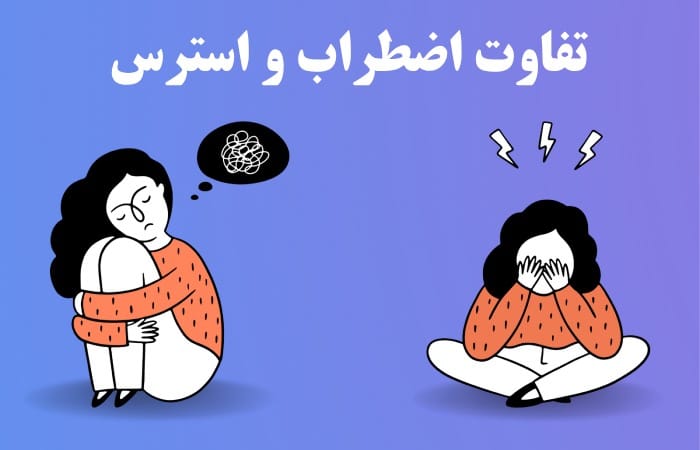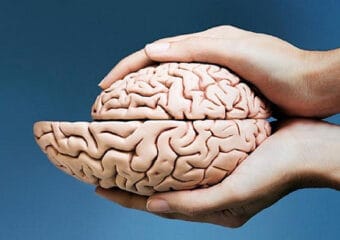
Blog
The difference between stress and anxiety

Stress and anxiety are two important and common psychological states that many people experience at different stages of life. These two states may appear similar, but they have fundamental and essential differences. A precise and complete understanding of these differences can help individuals better cope with these conditions and find more effective ways to manage them. In this article, we will examine the definitions, symptoms, causes, and key differences between stress and anxiety, and we will introduce strategies for managing each.
فهرست عناوین
ToggleWhat is Stress?
Stress is one of the body’s natural mechanisms that helps individuals respond to environmental threats and external pressures. Stress is usually a response to a specific external factor, such as an approaching project deadline, a high-pressure work environment, or family issues. This natural reaction can increase a person’s productivity and prepare them to face challenges.

Symptoms of Stress
Stress symptoms can vary depending on the individual’s personality traits and the intensity of the stressor. Some common symptoms of stress include:
- Physical: Increased heart rate, sweating, shortness of breath, muscle pain, and digestive issues.
- Psychological: Irritability, anger, mental anxiety, and decreased concentration.
- Behavioral: Changes in eating habits, use of drugs, alcohol, or cigarettes, and sleep disturbances.
Causes of Stress
- Occupational: Work pressure, job dissatisfaction, workplace conflicts.
- Academic: Exams, projects, and evaluations.
- Financial: Financial problems, debts, concerns about financial future.
- Personal: Family issues, failed relationships, life changes such as birth, marriage, or the death of a loved one.
What is Anxiety?
Anxiety is a state of persistent and excessive worry and fear that often occurs without a specific cause. This psychological state can have a profoundly negative impact on an individual’s daily life and disrupt their performance in various situations. Unlike stress, which is typically related to a specific external factor, anxiety is more associated with internal and undefined concerns. If left untreated over the long term, anxiety can lead to anxiety disorders.

Symptoms of Anxiety
Anxiety also presents with a variety of symptoms, which can include:
- Physical: Some physical symptoms of anxiety may resemble those of stress. These include heart palpitations, fatigue, muscle tension, dizziness, and excessive sweating.
- Psychological: Persistent worry, restlessness, irrational fear, and decreased concentration.
- Behavioral: Avoidance of social situations, panic attacks, and sleep disturbances.
Causes of Anxiety
- Genetic factors: A family history of anxiety disorders.
- Life experiences: Trauma, accidents, or unpleasant past experiences.
- Personal factors: Unhealthy lifestyle, use of harmful substances, chemical imbalances in the brain.
- Psychological issues: Anxiety disorders such as generalized anxiety disorder, social anxiety disorder, panic disorder, etc.
Key Differences Between Stress and Anxiety
First and foremost, it should be emphasized that both stress and anxiety are natural bodily defense mechanisms. However, there are key differences between them that can help in better distinguishing and managing these conditions:
- Stress is typically a reaction to a specific and external factor, and once the stressor is removed, the stress tends to subside.
- Anxiety is often internal and without a clear cause, and may occur even in the absence of any real threat. Anxiety is usually more long-term and persistent than stress.
- Stress can be somewhat positive and can help improve performance—for example, in preparing for an exam or a major project.
- Anxiety usually has more negative effects and can lead to a reduced quality of life, disruptions in daily functioning, and serious psychological issues.
- Stress involves a physiological response of the body, activating the sympathetic nervous system and releasing hormones such as adrenaline and cortisol, which result in quick and short-term reactions.
- Anxiety is more associated with psychological and emotional responses and may lead to long-term physical issues.
- Stress can usually be managed with stress-management techniques like breathing exercises, meditation, and lifestyle changes.
- Anxiety often requires broader interventions and psychological treatments, such as therapy, cognitive-behavioral therapy (CBT), and in some cases, medication.
- Stress can pave the way for anxiety, as stress occurs before anxiety, has a known cause, and the individual is aware of it.
- If stress persists over a long period, it can develop into anxiety, at which point the person may no longer have a clear understanding of the cause.

Methods for Managing Stress and Anxiety
There are various methods for managing each of these psychological states that can be effective:
Managing Stress
- Breathing exercises and meditation: These practices can help reduce tension and increase relaxation.
- Exercise and physical activity: Regular physical activity can lower stress levels and promote positive mental states.
- Lifestyle changes: This includes healthy eating, sufficient sleep, and more effective time management.
- Social support: Talking to friends, family, or a counselor can help reduce psychological pressure.
Managing Anxiety
- Cognitive Behavioral Therapy (CBT): One of the most effective methods for managing anxiety is CBT, which helps change negative thought and behavior patterns.
- Medication: In some cases, taking anti-anxiety or antidepressant medications under a doctor’s supervision becomes necessary.
- Relaxation techniques: Such as yoga, deep breathing exercises, and meditation can be effective.
- Professional support: Counseling and psychotherapy by mental health professionals can help in understanding and managing anxiety.
Understanding the fundamental differences between stress and anxiety and the ways to manage each can help individuals cope better with these mental states and improve their quality of life. Stress and anxiety are part of life, but with proper management techniques, their negative effects can be reduced, leading to better mental well-being. Recognizing the symptoms and causes of each condition and seeking professional help when needed is an important step toward lasting mental health.
برای مشاوره رایگان و رزرو وقت (یا اگر تماس گرفتید و قادر به پاسخگویی نبودیم) شماره تماس خود را وارد کنید. ما به زودی با شما تماس می گیریم!



